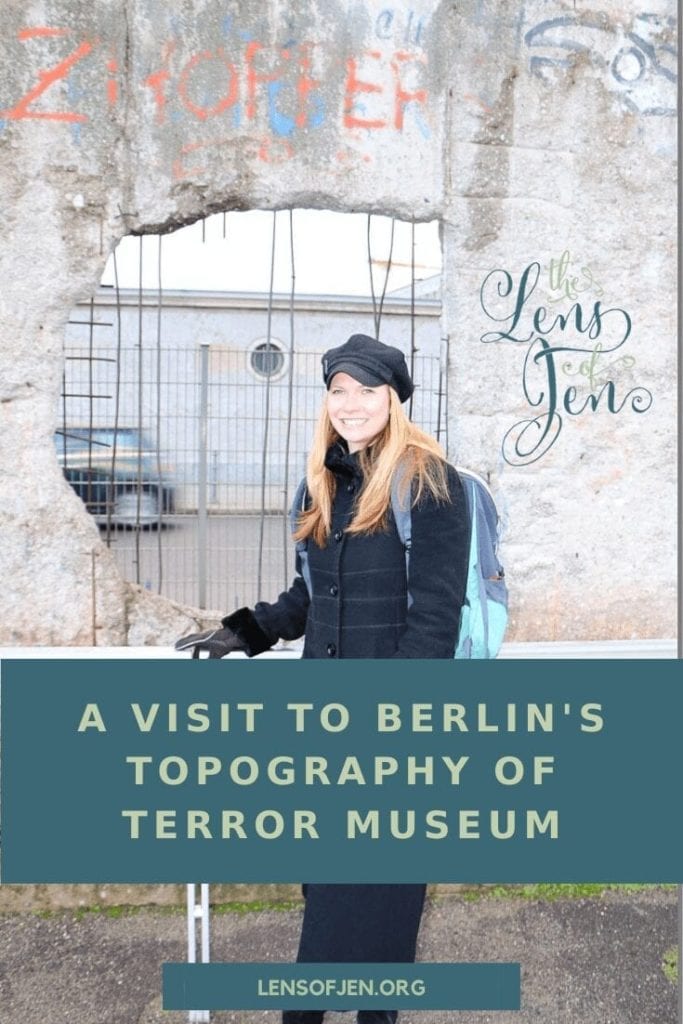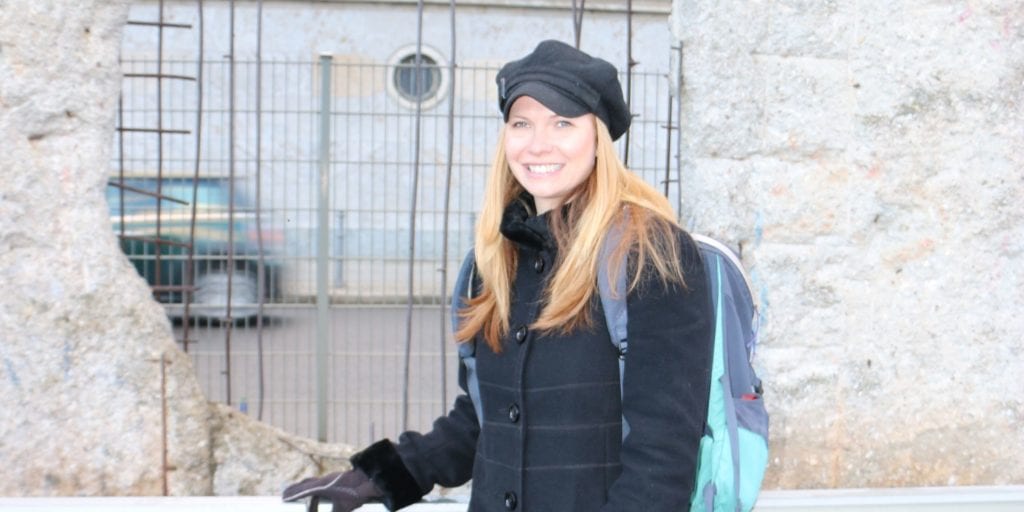Visiting the Topography of Terror Berlin Museum
Hey there! This post may contain affiliate links, which means I’ll receive a commission if you purchase through my link, at no extra cost to you. Please see my legal page for more details.
While visiting the Topography of Terror Berlin Museum, I found myself pushing anxiously through the exit doors into the damp December air.
Standing there on the steps of the terror museum, I attempted to absorb the hard – but necessary – lessons about the horrors of the Nazi regime from its astonishingly swift rise to power to its institutionalization of terror to its murderous crimes across Europe and, finally, to the regime’s violent end as Berlin burned in the final days of WWII.
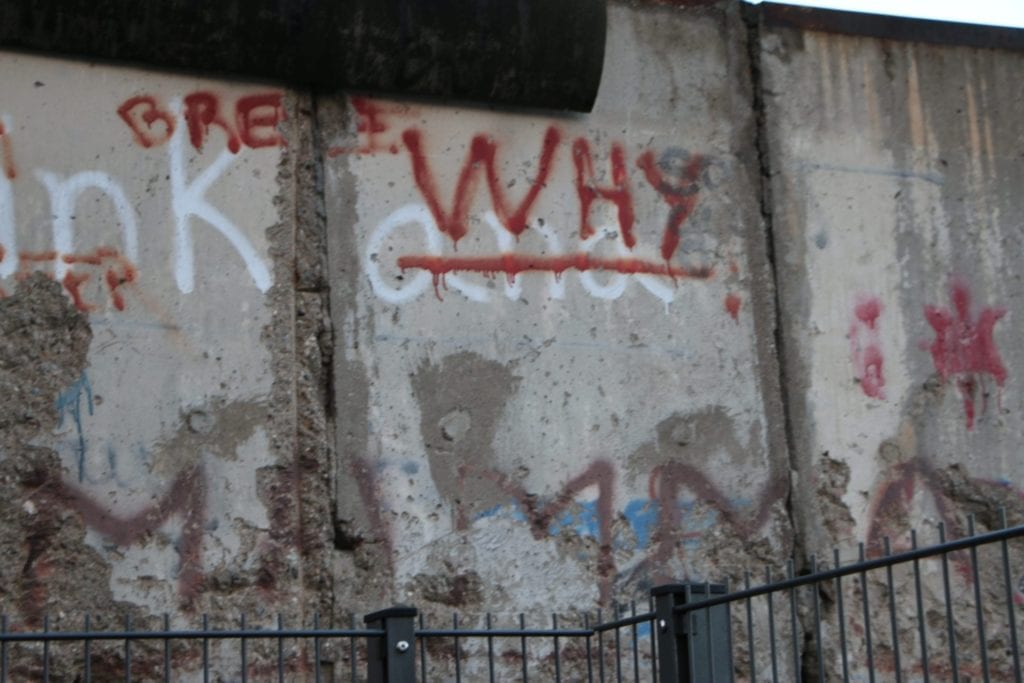
The museum is a frank and chronological account of world events from 1933-to 1945, but the Topography of Terror is different from most museums that focus on WWII because it is rooted in the German perspective and experience. It is a revealing and raw account of the way that fervent nationalism swept the German people into total war in less than a decade.
What it’s Like Visiting the Topography of Terror
The main exhibit of the Topography of Terror Museum takes visitors along a paneled timeline of Nazi events, decrees, and regulations that occurred at a rapid and overwhelming pace.
The escalation was stunning in its swiftness. Hitler was appointed in January of 1933, and by April opposition parties were banned, Hitler had the power to make laws without consulting the government, and the Nazi secret police – the Gestapo – were already inspiring both awe and terror with the rock-crushing sound of their jackboots on German streets.

Standing there on the threshold of the Topography of Terror Berlin Museum, the echo of goose-stepping jackboots was easy to imagine because the museum itself is located on the site of the former Gestapo and SS Headquarters.
The HQ buildings were flattened by bombing in the war, but a portion of the cellar wall was later excavated and preserved as a memorial and monument to the people who were held and tortured in the cellar’s notorious “house prison”.
Those suspected of aiding in the resistance, harboring Jews, or breaking a regulation within earshot of an informing neighbor spent agonizing hours near that cellar wall before deportation into a deadly network of concentration camps.
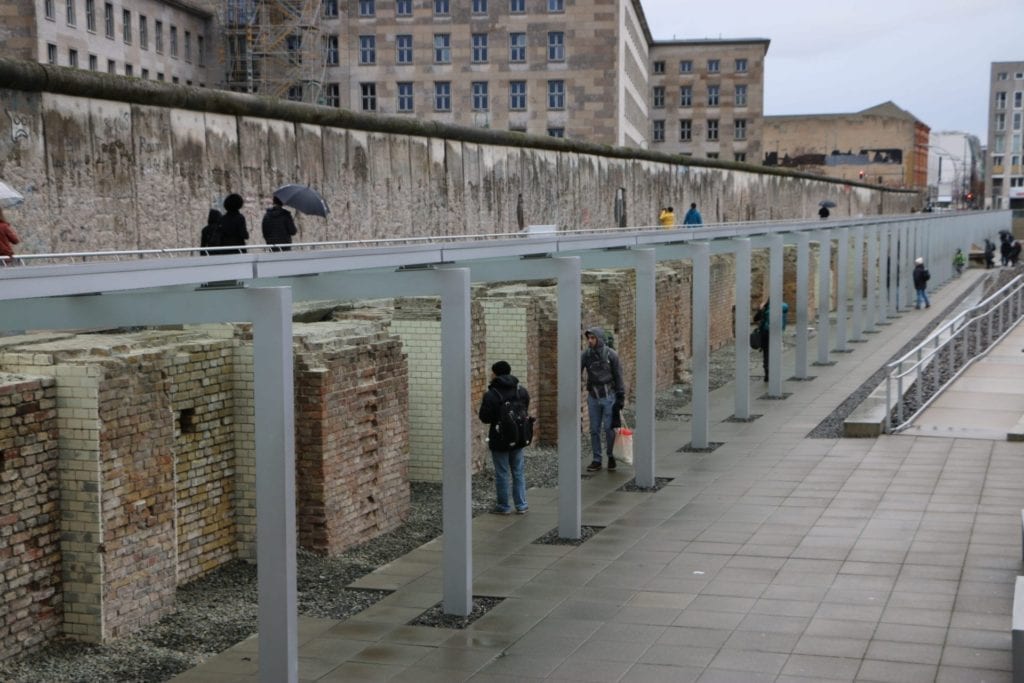
History Compounded
In a case of compounded history, the post-war Berlin Wall was built almost on top of the place where the Nazi prison once stood. The remains of the prison wall run parallel to what’s left of the Berlin Wall.
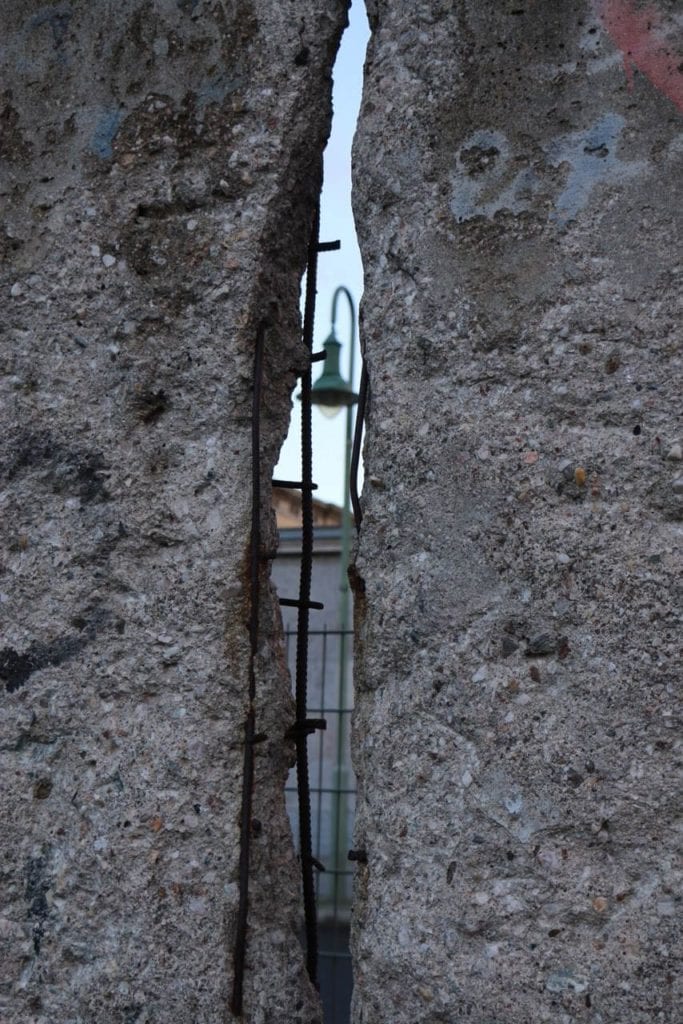
So that what’s left of one wall shows the effects of the devastating bombing that helped bring a decisive end to WWII, and what’s left of yet another wall displays the scars of the peaceful but defiant protests that brought down the Berlin Wall for good.
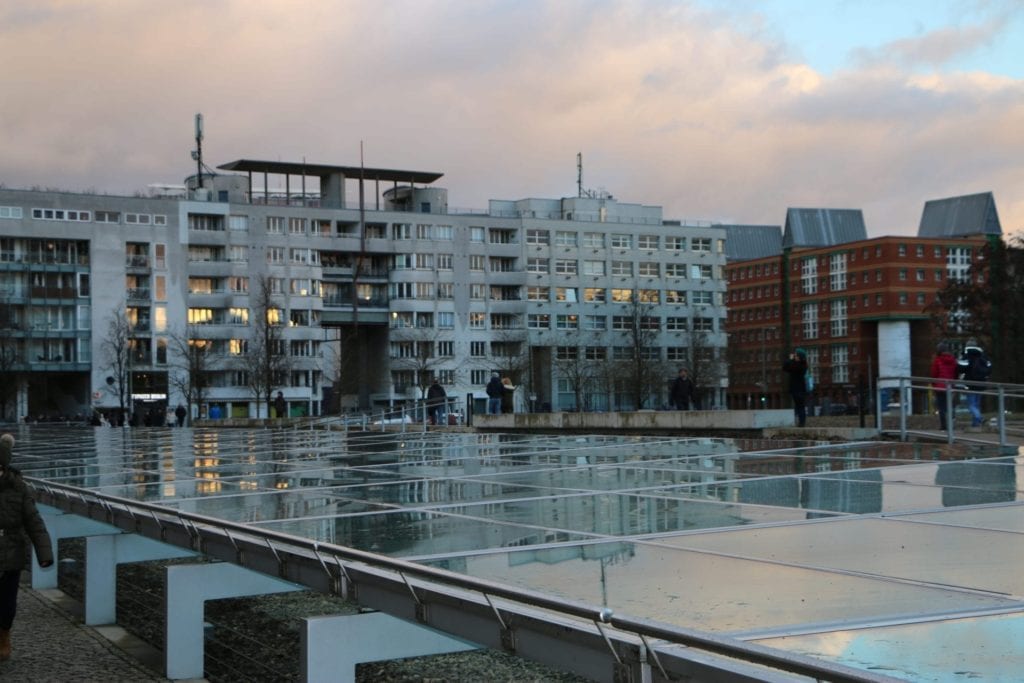
On that chilly December day in front of the Topography of Terror Berlin Museum, people strolled between the remnants of the two walls as rain gave way to a bright late-afternoon sun that belied the mood of the place and the tension of the city.
It was only a week after a man had driven a truck into a Christmas market killing 12 and leaving a new kind of mark on Berlin.
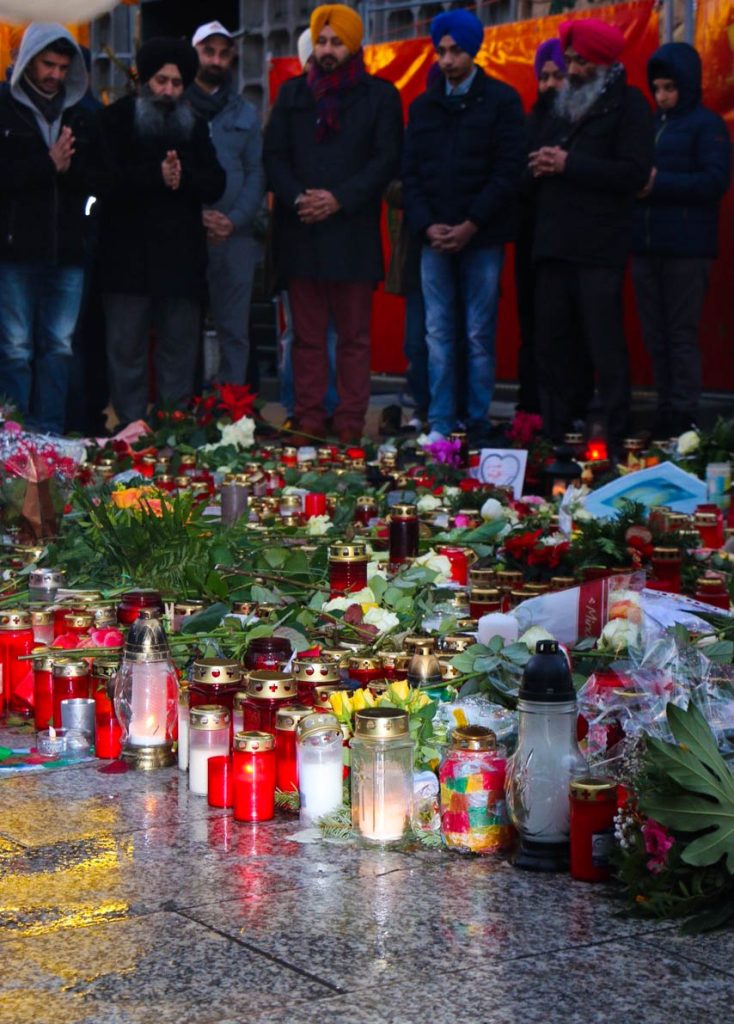
The Modern-Day Topography of Terror
Being there in the wake of the attack and with the decimated remains of a Nazi prison beneath my feet and the crumbled remains of two walls that were once uncompromising and life-defining in front of me, it was impossible not to feel the weight of tragedy that humans are capable of inflicting on one another.
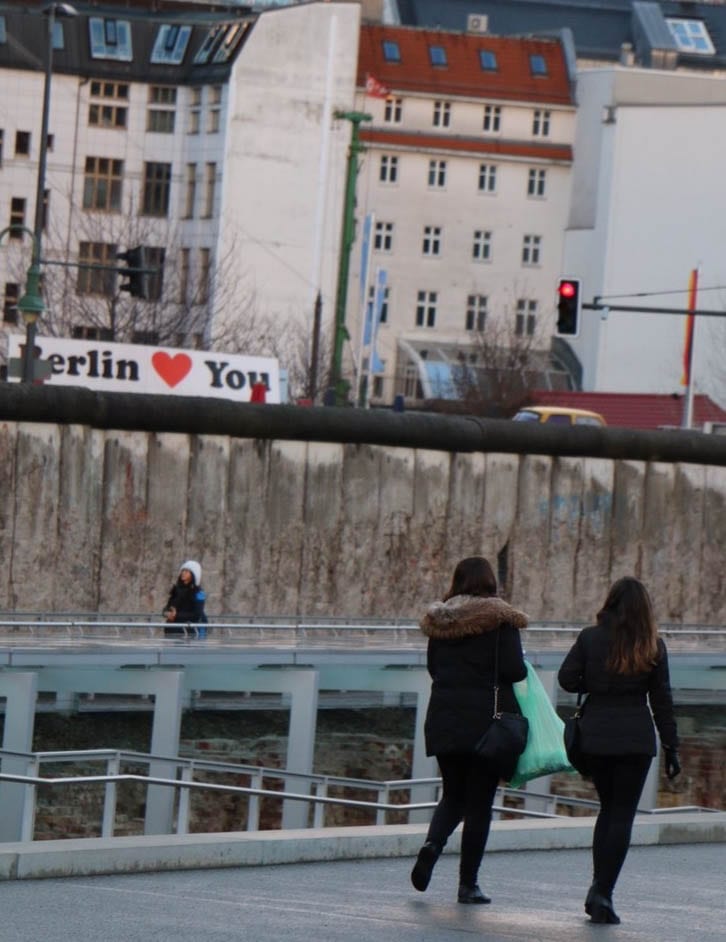
And then something caught my eye. It was a sign erected in such a way that it stretched above the remains of both walls. The sign read simply: “Berlin ♥ You”.
I smiled at the sign, took a deep breath, and went back inside. There were more lessons to be learned.
Logistics and costs for the Topography of Terror Berlin:
Berlin’s
Topography of Terror
- Located at: Niederkirchnerstraße 8, 10963 Berlin, Germany
- Open 10am-8pm
- Admission to the Topography of Terror is free!
- Schedule at least three hours for this visit
- Bring a coat as you’ll want to explore the outdoor exhibit (weather permitting)
Where to stay in Berlin
My favorite neighborhood when I’m staying in Berlin is Prenzlauer Berg. Here are avaiailable hotels and homestays in the Berlin neighborhood:
My collection of non-fiction books about WWII
Peruse my curated list of best non-fiction WWII books here and buy from an independent bookseller near you.
About the Author
Hi! I’m Jen!
I’m a freelance writer and travel blogger who quit my nine-to-five after my fiancé, Jeff, died of cancer at the age of 40. When he died, I realized that life is just too short to delay our dreams. Since my dream was to travel and write, I now travel and write full-time. Today I wear hiking boots instead of heels and collect experiences instead of things.
You might also like
